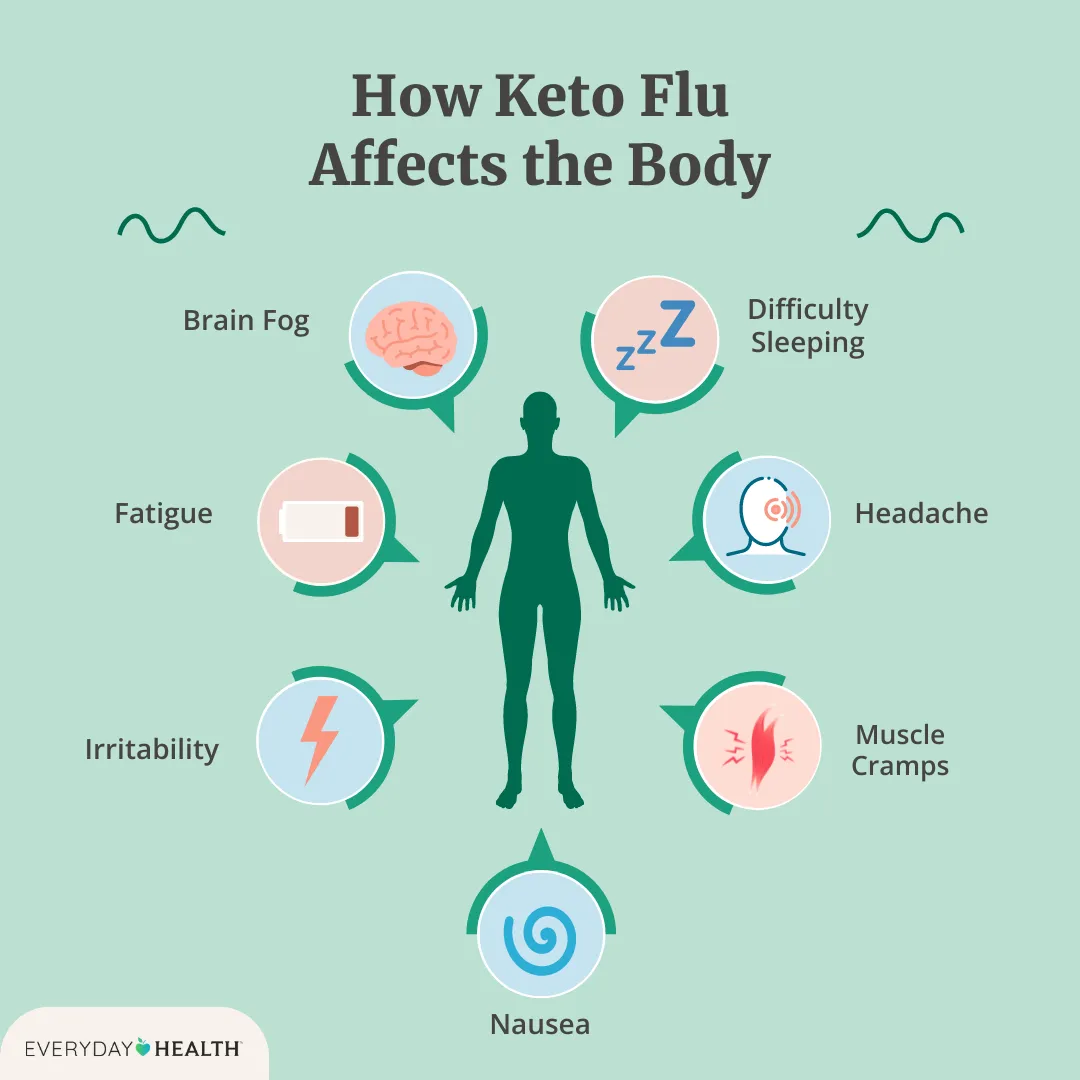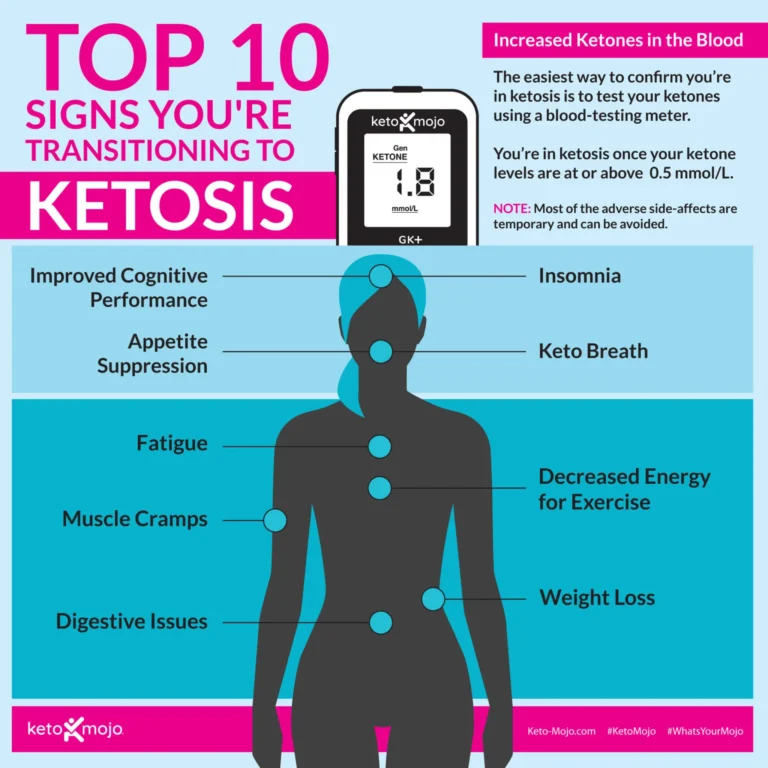From Fatigue to Nausea: Recognizing the Signs of Keto Flu
From Fatigue to Nausea: Recognizing the Signs of Keto Flu
The ketogenic diet has gained immense popularity in recent years due to its potential for weight loss and numerous health benefits. However, as with any major dietary change, there can be some side effects that come along with it. One of the most common side effects of starting a ketogenic diet is what is known as the “keto flu.”
Keto flu is a collection of symptoms that can occur when your body is adjusting to the switch from using carbohydrates as its primary fuel source to using fats. This transition can be challenging for some people, and they may experience a range of symptoms that can be uncomfortable and sometimes debilitating. In this article, we will explore the signs of keto flu, how to recognize them, and what you can do to alleviate them.
Signs of Keto Flu
1. Fatigue
One of the most common symptoms of keto flu is fatigue. Many people report feeling extremely tired and lethargic when they first start a ketogenic diet. This is because your body is adjusting to using fat as its primary fuel source instead of carbohydrates. It can take some time for your body to adapt to this change, and in the meantime, you may feel more tired than usual.
2. Nausea
Another common symptom of keto flu is nausea. Some people may experience mild to severe nausea when they first start a ketogenic diet. This can be due to a variety of factors, including changes in your digestive system as well as the increased production of ketones in your body. Nausea can be a challenging symptom to deal with, but it typically subsides as your body becomes more accustomed to the ketogenic diet.
3. Headaches
Headaches are another common symptom of keto flu. Many people report experiencing frequent headaches when they first start a ketogenic diet. This can be due to a variety of factors, including dehydration, electrolyte imbalances, and changes in your blood sugar levels. Headaches can be quite uncomfortable, but they usually improve as your body adjusts to the ketogenic diet.
4. Muscle Cramps
Muscle cramps are another common symptom of keto flu. Many people report experiencing muscle cramps, especially in their legs, when they first start a ketogenic diet. This can be due to dehydration, electrolyte imbalances, and changes in your body’s mineral balance. Muscle cramps can be painful and frustrating, but they typically improve as your body adapts to the ketogenic diet.
5. Brain Fog
Brain fog is a common symptom of keto flu that many people experience when they first start a ketogenic diet. This can manifest as difficulty concentrating, memory issues, and overall mental fogginess. Brain fog can be challenging to deal with, but it usually improves as your body adjusts to using fat as its primary fuel source.
Recognizing the Signs of Keto Flu
It’s important to recognize the signs of keto flu so that you can take steps to alleviate them and make the transition to a ketogenic diet as smooth as possible. Here are some tips for recognizing the signs of keto flu:
1. Pay attention to how you feel.
If you notice that you are feeling more tired, nauseous, or experiencing other symptoms that are out of the ordinary, it’s important to pay attention to how you feel. These symptoms could be signs of keto flu, and it’s essential to recognize them so that you can take steps to alleviate them.
2. Keep track of your symptoms.
Keeping track of your symptoms can help you identify patterns and trends that may indicate keto flu. If you notice that you are experiencing certain symptoms at specific times of the day or after certain meals, this can help you pinpoint the cause and take steps to address it.
3. Consult with a healthcare professional.
If you are experiencing severe or persistent symptoms of keto flu, it’s essential to consult with a healthcare professional. They can help you determine the cause of your symptoms and provide you with guidance on how to alleviate them.
Alleviating the Symptoms of Keto Flu
If you are experiencing symptoms of keto flu, there are several steps you can take to alleviate them and make the transition to a ketogenic diet more manageable. Here are some tips for alleviating the symptoms of keto flu:
1. Stay hydrated.
One of the most important things you can do to alleviate the symptoms of keto flu is to stay hydrated. Drinking plenty of water throughout the day can help prevent dehydration, which can exacerbate symptoms such as fatigue, headaches, and muscle cramps.
2. Increase your electrolyte intake.
Electrolytes are essential minerals that help regulate your body’s fluid balance, muscle function, and nerve function. When you start a ketogenic diet, your body may excrete more electrolytes than usual, leading to imbalances that can cause symptoms such as muscle cramps and fatigue. Increasing your intake of electrolyte-rich foods, such as leafy greens, nuts, seeds, and avocados, can help replenish your electrolyte levels and alleviate these symptoms.
3. Eat a balanced diet.
Eating a balanced diet that includes a variety of nutrient-rich foods can help alleviate the symptoms of keto flu. Focus on consuming plenty of leafy greens, non-starchy vegetables, healthy fats, and high-quality proteins to ensure that you are getting all the nutrients your body needs to function optimally.
4. Get plenty of rest.
Rest is essential when you are experiencing symptoms of keto flu. Make sure to prioritize sleep and relaxation to give your body the time it needs to heal and adjust to the ketogenic diet. Aim for at least seven to nine hours of quality sleep each night to help alleviate symptoms such as fatigue and brain fog.
5. Gradually increase your fat intake.
If you are experiencing severe symptoms of keto flu, it may be helpful to gradually increase your fat intake over time. This can give your body the time it needs to adjust to using fat as its primary fuel source and alleviate symptoms such as nausea and brain fog.
Frequently Asked Questions About Keto Flu
1. How long does keto flu last?
The duration of keto flu can vary from person to person. Some people may experience symptoms for a few days, while others may experience them for a week or longer. Typically, keto flu symptoms improve as your body adjusts to the ketogenic diet, and they should subside within a few weeks.
2. Can I prevent keto flu?
While it may not be possible to prevent keto flu entirely, there are steps you can take to reduce the severity and duration of symptoms. Staying hydrated, increasing your electrolyte intake, eating a balanced diet, getting plenty of rest, and gradually increasing your fat intake can all help alleviate the symptoms of keto flu.
3. Can I continue to exercise while experiencing keto flu?
It’s generally safe to continue exercising while experiencing keto flu, but you may need to adjust your routine to accommodate your symptoms. If you are feeling extremely fatigued or experiencing muscle cramps, it may be helpful to scale back on the intensity of your workouts or focus on low-impact activities such as walking or yoga until your symptoms improve.
4. When should I consult with a healthcare professional about keto flu?
If you are experiencing severe or persistent symptoms of keto flu, such as severe nausea, vomiting, or prolonged fatigue, it’s essential to consult with a healthcare professional. They can help you determine the cause of your symptoms and provide you with guidance on how to alleviate them.
In conclusion, keto flu is a common side effect of starting a ketogenic diet, but it is typically temporary and can be alleviated with proper hydration, electrolyte intake, a balanced diet, rest, and gradual adjustments to your fat intake. By recognizing the signs of keto flu and taking steps to alleviate them, you can make the transition to a ketogenic diet more manageable and enjoy the numerous health benefits that it has to offer.








